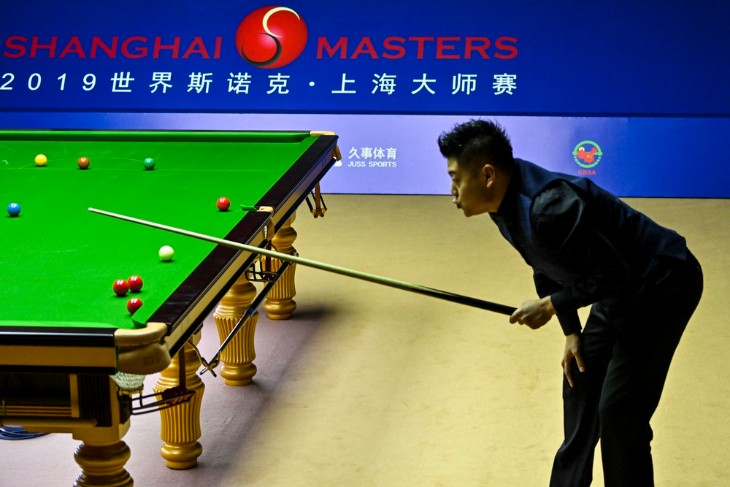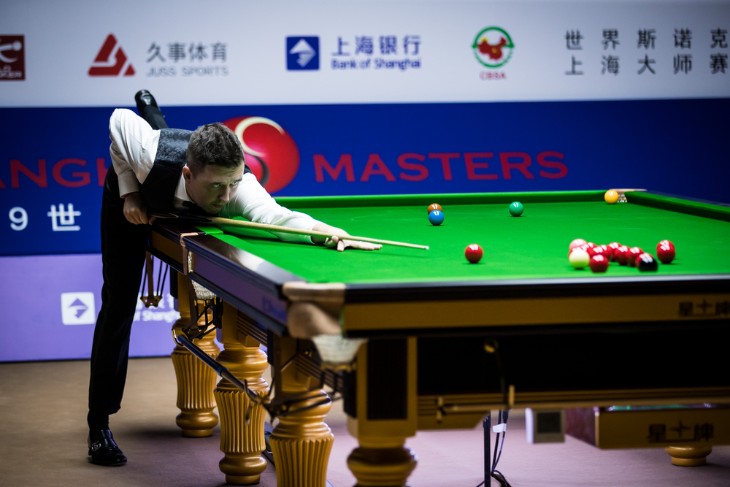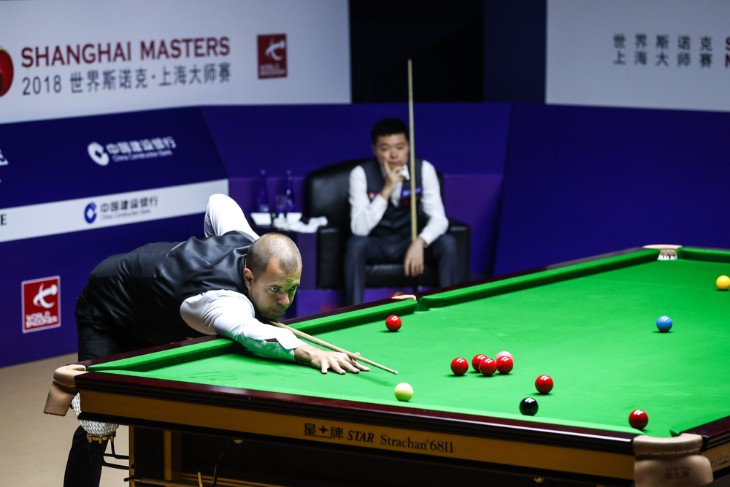The Role of Tactics in Snooker
Game plans in snooker are multifaceted and require a deep understanding of both offensive and defensive strategies. Players must not only focus on scoring but also on controlling the table and limiting their opponent's opportunities. A well-thought-out game plan can often be the difference between winning and losing, especially in tight matches where every point counts.
Tactics in snooker include a variety of strategies, such as:
- Safety play: A defensive strategy aimed at placing the cue ball in a position that makes it difficult for the opponent to pot a ball and score. Effective safety play can force opponents into making mistakes, offering opportunities to regain control of the table.
- Break building: The art of scoring a high number of points in a single visit to the table. This involves potting a red ball followed by a colour ball and requires precise positioning of the cue ball to maintain control of the table.
- Snookers: Placing the cue ball in such a position that the opponent cannot directly hit the ball they are required to play next. This can lead to the opponent giving away penalty points if they fail to make a legal shot.
Strategy understanding is crucial for predicting and countering the opponent's moves. Players must adapt their tactics based on the layout of the balls and the current state of play. This includes deciding when to play aggressively by going for pots and break-building, and when to adopt a more defensive approach to snooker the opponent or play a safe shot.
Key elements of strategic play include:
- Choosing the right shot: Assessing the risk versus the reward of every shot and choosing the most advantageous option.
- Positional awareness: Always thinking several shots ahead to maintain an advantageous position on the table.
- Adapting to the opponent's style: Adjusting one's game plan to exploit the weaknesses or counter the strengths of the opponent.
Incorporating these tactics into one's game requires practice, experience, and a keen sense of observation. Players often spend countless hours refining their skills and strategy understanding to master the complex and competitive game of snooker.
Key Shots in Snooker: A Comprehensive Guide
In the intricate world of snooker, mastering key shots is essential for executing game plans in snooker effectively. These shots form the foundation upon which players build their strategy, allowing them to navigate the table, score points, and control the game's flow. One fundamental shot is the long pot, a test of accuracy and control, enabling players to pot balls from a distance. Success in these shots can intimidate opponents and open the table for high-scoring opportunities.
Another critical shot type is the safety shot, which is central to a player's defensive strategy. Executing a precise safety shot can shift the momentum of the game, forcing the opponent into difficult positions and potentially leading to mistakes. Additionally, the screw back shot allows players to draw the cue ball back after hitting a target ball, essential for positioning and setting up subsequent shots. Mastering these shots, among others, provides players with the tools needed for effective break-building and tactical play.
Training Techniques for Improving Your Snooker Game
Improving one's snooker game requires dedicated practice and the right training techniques. A comprehensive approach to training can significantly enhance a player's ability to execute game plans in snooker with precision and confidence. One effective technique is the practice of routine shots, where players repeatedly execute the same shot until they achieve consistent success. This repetition helps in muscle memory development, ensuring that players can perform these shots under match conditions.
Incorporating drills into practice sessions is another crucial technique:
- Line-up drills: Placing all red balls in a straight line across the table and attempting to pot them in sequence with the black ball, focusing on positional play to facilitate the transition from one ball to the next.
- Target practice: Setting up shots that require precise cue ball control, such as screw back or follow-through shots, to improve accuracy and touch.
- Safety play exercises: Practicing safety shots from various positions on the table to enhance defensive strategies.
These training techniques, combined with regular match simulations that mimic competitive conditions, can help players refine their skills and strategy understanding, preparing them for the pressures of actual competition.

The Importance of Positional Play
Positional play is a cornerstone of successful snooker strategy, underpinning both offensive and defensive strategy understanding. The ability to control the cue ball's position after each shot determines a player's ability to construct high-scoring breaks and dictate the game's pace. Effective positional play requires not only technical skill in executing shots but also a strategic mind to anticipate future shots and plan several moves ahead.
The importance of positional play cannot be overstated, as it allows players to:
- Maintain control of the table by keeping the cue ball in advantageous positions, thereby increasing the likelihood of potting subsequent balls.
- Limit the opponent's opportunities by placing the cue ball in positions that are difficult to respond to, enhancing the effectiveness of safety shots and snookers.
Mastery of positional play involves understanding the angles, spin, and speed with which the cue ball is struck. This understanding enables players to navigate the table efficiently, transitioning smoothly between shots and maximising scoring opportunities. As players advance in skill, their ability to manipulate the cue ball with precision becomes a significant factor in their overall performance and success in matches.
[promotion:1149]
Break Building Strategies
Effective break building is a critical component of game plans in snooker, as it directly contributes to scoring and can exert psychological pressure on opponents. To develop a high-scoring break, players must excel in both shot selection and cue ball control, ensuring they can continue potting balls without losing position. Several strategies are key to enhancing break building skills:
- Planning multiple shots ahead: Always think at least three or four shots ahead, considering the position of the red balls and available colours to maintain the break.
- Cue ball positioning: Master the use of spin and speed to position the cue ball optimally after each shot, allowing for easier subsequent shots.
- Choosing the right balls to pot: Prioritise red balls that open the table and provide natural positioning for the next colour ball.
Incorporating these strategies into practice sessions through specific drills can significantly improve a player's break-building ability. For example, practising the "line up" drill without the black ball forces players to focus on reds and colours alternately, mimicking a real break-building scenario. Additionally, setting personal challenges, such as achieving a certain break score before concluding the practice session, can motivate and enhance strategy understanding.

Defence in Snooker: An Overview
Defence plays a pivotal role in snooker, often determining the outcome of frames and matches. A strong defensive strategy understanding not only prevents opponents from scoring but can also create opportunities to regain control of the table. Effective defence requires a combination of tactical foresight, precision, and psychological insight, enabling players to place their opponents in challenging positions.
Key defensive strategies include:
- Safety shots: Executing safety shots that leave the cue ball in positions difficult for the opponent to make a successful pot. This often involves positioning the cue ball close to the baulk cushion or behind snookering balls.
- Snookers: Deliberately positioning the cue ball in such a way that the opponent cannot directly hit any legal object ball, potentially leading to fouls and offering the chance to score from penalties.
The practice of defensive play should be an integral part of a player's training regimen, focusing on both shot execution and the ability to read the table for the best defensive positions. Engaging in practice matches where the primary focus is on defensive strategies rather than scoring can provide valuable experience. This defensive mindset is crucial for players at all levels, as it complements offensive skills and creates a well-rounded approach to playing snooker.
Preparing for Competitive Play: Tips and Best Practices
As players transition from casual to competitive snooker, game plans in snooker must evolve to meet the demands of higher-stakes play. Preparation for competitive play involves not only honing technical skills but also adopting a professional approach to training, mindset, and match-day routines. Here are some essential tips and best practices:
- Structured practice schedule: Allocate specific times for practice focusing on different aspects of the game, such as break building, safety play, and shot precision. Consistency in practice strengthens muscle memory and builds confidence.
- Mental preparation: Develop mental resilience through techniques like visualization, where players mentally rehearse their performance, including handling pressure situations and recovering from setbacks.
- Physical fitness: Maintain a regimen of physical exercise to improve stamina and concentration, essential for enduring long matches or tournaments.
- Match simulation: Regularly simulate match conditions in practice sessions to adapt to the pressure and flow of competitive play. This includes practising under time constraints and playing practice frames against opponents of similar or higher skill levels.
Adhering to these practices enhances strategy understanding and prepares players for the rigours of competitive snooker. Incorporating feedback from coaches or experienced players can also provide valuable insights into improving performance and strategy.
Conclusion
In sum, snooker is a complex and nuanced game that demands a comprehensive blend of technical skill, strategic acumen, and mental fortitude. From understanding the basics of the game and mastering key shots to developing sophisticated game plans in snooker and strategy understanding, players must continually refine and expand their repertoire of skills. The importance of positional play, break building strategies, and a solid defence cannot be overstated, as these elements form the cornerstone of competitive success.
Preparing for competitive play underscores the necessity of a holistic approach to snooker, incorporating structured practice, mental and physical preparation, and the cultivation of a strategic mindset. As players ascend through the ranks of competitive snooker, the lessons learned through rigorous training, strategic planning, and match experience contribute to their development not just as players, but as strategists of the game.



.webp)


 (1).webp)





















